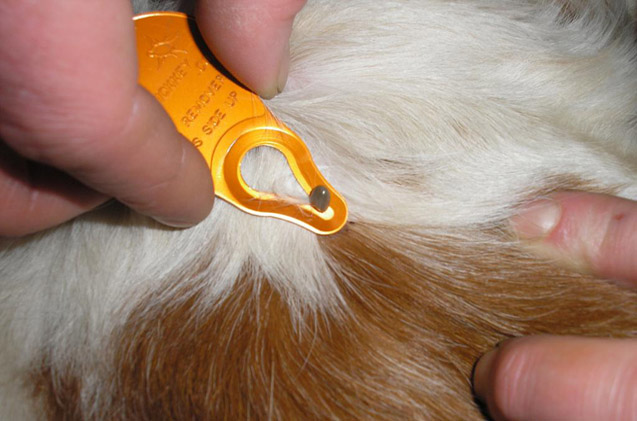Dog owners should know how to control ticks and fleas that infest their pets. We may occasionally feel a swollen tick when we tap our dog. These small insects usually enlarge during the molting process or when they are about to lay eggs. Ticks are more than just annoying bloodsuckers, like mosquitoes they can also transmit numerous diseases in dogs.
- Ehrlichia is a common disease that affects dogs with ticks. This disease is caused by a type of rickettsial organism. Dogs with ehrlichia often suffer from leg arthritis, neurological diseases, lethargy, fever, bleeding, low platelet counts and anemia.
- Rocky Mountain Spotted Fever can also be transmitted by ticks. Dogs with this fever may have anemia, heart rhythm irregularities, bleeding disorders, breathing difficulties, neurologic disease fever and serious organ failure.
- Lyme disease is quite well known and it is often transmitted by deer ticks. Symptoms of Lyme disease include fever, lethargy, lack of appetite, weight loss and leg arthritis.
- Babesia is a type of tropical disease caused by protozoa that damage red blood cells. As a result, dogs with babesia often have low platelet counts, anemia, bleeding, fever and jaundice.
- Canine hemobartonella: It is a less understood disease and usually transmitted by ticks and fleas. Hemobartonella attaches itself to the red blood cells. In many cases, dogs don’t show signs of illness, but anemia could result if enough red blood cells break down.
Fleas are brown, wingless small insects that pierce the skin to siphon some blood. Fleas also inject a little saliva to prevent blood clotting. Many dogs can become particularly sensitive to bites and saliva; some can show severe symptoms of allergy. Flea allergy dermatitis is a common disease among dogs. Dogs could begin scratching and chewing specific spots, until they become hairless, oozing and raw. When these hotspots begin to appear, dogs could be more susceptible to serious infection. In general fleas can be very difficult to spot and the most likely signs are when the dog scratches itself frequently. In general, if one animal in the house is affected by flea, we should assume that others are also affected. Fleas can thrive in warm and humid weather and their pupa can stay dormant for a few months.
It is important to take control of the situation and prevent these insects from further affecting our dogs. The first thing we do is to vacuum the area and play closer attention to corners and cracks. After vacuuming, we should immediately clean the bag, because it could serve as an incubator for the pupa and become the source of future infestation. We should clean it with running water outside the house with bleach and dry it under the sun for hours.
The next step is to treat the dog directly and there are a number of topical products that can deal with specific hotspots. It is also important to have an insect growth regulator to efficiently target these insects in all stages of their lifecycle.
















